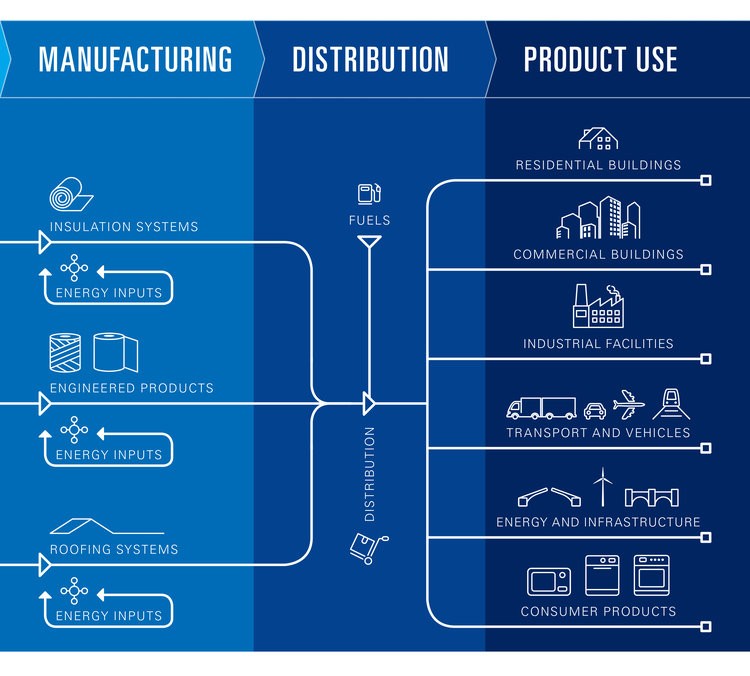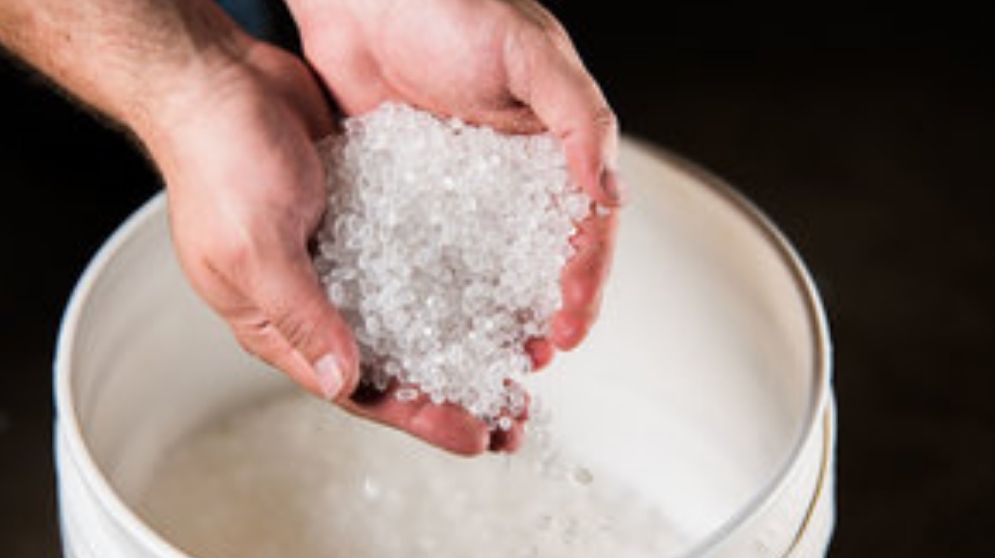Manufactured products, such as insulation, roofing, and engineered membranes, all help buildings to be more energy efficient, durable, and sustainable during their useful life. But how can we tell if the products themselves are created in a sustainable manner? The answer lies in the willingness of manufacturing companies to be completely transparent in reporting the environmental, energy, and even social-equity impacts of their products. Many companies, including Johns Manville, have not only been willing, they have provided leadership in fostering this transparency and accountability toward meeting sustainability goals for their products, thus impacting buildings and environments around the world. Here are a few of the ways they do it:
Life Cycle Assessment: A life cycle assessment (LCA) is an analysis of every phase of the creation and use of a product. These phases include:
- Raw Materials: Commonly, raw materials have been mined from the earth or taken from chemical deposits. In today’s environmentally conscious mindset, they can also include recycled or renewable materials.
- Transport: Moving the raw materials from different sources to the place of manufacturing involves shipping and energy use.
- Manufacturing: Next, the manufacturing phase takes over, in which labor, equipment, and energy are used to create the building material or product. These processes can consume varying amounts of resources and produce varying levels of emissions that need to be controlled or addressed.
- Distribution: The finished products need to be transported to the jobsite, again requiring energy and other resources.
- Product Use: Once the product is incorporated into construction and the building is placed into service, it is in the useful life phase. It is expected that the product performs successfully as intended and holds up well over time.
- End of Use: Finally, at the end of the useful service life of either the building or the product, the end-of-life phase emerges, in which decisions about disposing, recycling, or reusing are made based on the attributes of the product.

Environmental Product Declaration (EPD): Once a product has completed an independent life cycle assessment for each phase, then an environmental product declaration (EPD) can be created by a manufacturer. This document publicly reports the results of the LCA in at least eight categories (such as energy use, water consumption, emissions, etc.), and is typically verified by a third party such as UL Environment (ULE). EPDs enable architects, building owners, and others to make accurate, direct comparisons of the environmental attributes—such as carbon footprint and embodied energy—of similar products. Hence, products can be assessed when they may have the same traditional attributes (e.g., strength, durability, cost) but need to be selected and specified based on the lowest environmental impact of interest.
International Standards: The International Organization for Standardization (ISO) (www.iso.org) has become recognized around the world for establishing standards and rules for products and companies. This organization, while an independent body, is actually a network of national standards organizations from many countries. In the United States, the American National Standards Institute (ANSI) is the member body that participates in and contributes to the standards that are promulgated under ISO. It publishes standards in the ISO 14044 family to specify requirements and provide guidelines for life cycle assessments. In addition, it administers a program known as ISO 14001, which sets out the criteria for a manufacturer to be certified for implementing an environmental management system. Using ISO 14001 provides assurance to company management, employees, and external stakeholders that the environmental impact of a company’s full operation is being measured, reported, and improved upon.
When working with a product manufacturer, it is reassuring to know that it maintains a corporate dedication to not only comply with all environmental laws and regulations, but implements practices that protect natural resources and systems, all while supporting the production and delivery of high-quality products. You can read more about Johns Manville’s extensive sustainability efforts and results in the Corporate Sustainability Report.

